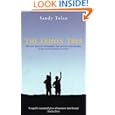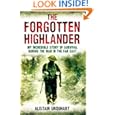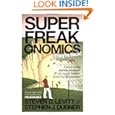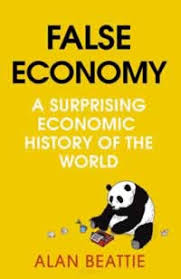|
|
| Blog |
 |
| Archive |
|
|
|
|
| Blog |
| To find an archived article, simply click on Index and scroll the subject titles, or do a Ctrl-F search |
|
|
| Blog |
 |
| Archive |
|
|
|
|
| Blog |
| To find an archived article, simply click on Index and scroll the subject titles, or do a Ctrl-F search |
Opinion & Analysis |
Sunday, March 8, 2009 |
||||
Tony Allwright: Hypocrisy of
|
|||||
|
‘They know |
This came to mind when novelist John Banville recently
Animal-rights defenders certainly know how to get into
|
They were responsible for assaults, arson and threats to prevent the building of an animal-testing laboratory at Oxford University (unsuccessfully, because it opened last November). They engaged in terrorist actions and intimidation against staff, suppliers, customers and shareholders of Huntingdon Life Sciences (HLS). Brian Cass, the managing director, was beaten with pickaxe handles. All because HLS conducted tests on 75,000 animals a year.
In the UK some 3.2m creatures a year, mostly rodents, fish and fowl, are used in animal testing. By comparison, 31m mammals plus 724m fowl are killed for food. I have no idea how many of these die by kosher or halal methods, but since Jews and Muslims number around 3.3% of the UK’s population, it’s reasonable to assume a similar ratio of animals suffer this barbaric form of death, so about 1m mammals plus 24m fowl. In Ireland, which has 35,000 Jews and Muslims, the numbers would be about 19,000 mammals and 440,000 fowl.
The percentage of creatures who suffer during testing is a moot point, since many tests are benign. But the prolonged death by knife and bleeding of large, sentient farm animals is unmistakable. They feel, and they know what’s happening as their lives ebb away through open, stinging veins. Perhaps chickens and turkeys do too. So you have to wonder why peaceful anti-vivisectionists such as Banville remain silent on what’s clearly a crueller assault on animals than testing, or indeed badger-baiting. Don’t they care about the suffering caused by kosher and halal slaughter?
Well, here’s the (convenient) thing. Animal testing is confined almost exclusively to western countries — those familiar old white-fascist imperialists of America, Europe, and Australia — which have an inordinate respect for human rights. You can be as bad as you like in these countries knowing there will never be a concerted effort, by either the military or the populace, to summarily exterminate you.
You can upset, at will, the natives of western democracies without any fear of personally suffering a bullet-and-halal-style murder with a five-page note knifed into your chest, as Theo van Gogh experienced in Amsterdam, or riots and burnings in cities with people screaming “death to the animal-rights activists” — and meaning it. On the other hand, halal killing of animals takes place throughout the Islamic world. About one billion Muslims, or one fifth of the world’s population, depend on halal meat for their food. Ditto the Jews, though there are only 15m of them. The animals suffering death by halal and kosher methods far exceed those in western animal laboratories.
So, it can be argued that Jews, Muslims, their livestock farmers and abattoirs constitute a logical target for animal-rights campaigners. Yet they do nothing. Is this out of respect for Jewish and Islamic cultures? Or is it possible the activists are the teeniest bit nervous about criticising a key practice of two mighty Abrahamic religions in case it brings retribution down upon their heads? Can those old-lady disinterrers really be so craven that they fear a fight-back? Or do they believe that tolerating the suffering of animals is preferable to actually experiencing it yourself? But then, isn’t that the whole purpose of animal-testing in the first place?
Tony Allwright is an engineering and industrial safety consultant
© 2009 Sunday Times
More on this subject in a blog post
entitled
“Why
Animal Rights Activists Love Halal (and Kosher)”
HAVE YOUR SAY
(Online only)
If Tony is so bothered about this form of slaughter, why doesn't he start his own campaign against it instead of expecting someone else to? There are already plenty of animal rights groups focused on the cruelty of (all of) the meat industry, and many campaigners are Jewish and Muslim.
Dave, Worthing,
![]()
Irish edition of Sunday Times, March 15th 2009
(Not available online)
‘Cruel’ Slaughter is Myth
IT IS a great pity that Tony Allwright did not ask for accurate information about shechita -- the Jewish religious humane method of slaughtering permitted animals mats and poultry for food (Hypocrisy of animal rights campaigners, Comment, last week). It is a popular myth that shechita is a painful method of slaughter.
In fact, there is ample scientific evidence to the contrary. It requires the rapid uninterrupted severance of major vital organs and vessels which produces an instant drop in blood pressure in the brain. This results in the immediate and irreversible cessation of consciousness and sensibility to pain. It is both humane and efficient and is followed by immediate death.
Shechita accounts for only 225,000 of the almost 750m animals slaughtered each year for food in the UK (0.3%). The real concern for animal welfare activists should be the far greater numbers mis-stunned by captive-bold or electricity.
Even the RSPCA has emphasised its “long standing concern about the inadequacy of stunning methods and the extra stress they cause to animals”. Those with a genuine concern for animal welfare would do well to turn their attention to that problem, rather than propagate ill-informed myths about Jewish practice.
Henry
Grunwald QC
Chairman, Shechita UK
Veggie is the answer
Our organisation (Jewish Vegetarians of North America) opposes all slaughter of animals for food. Animal-based diets are devastating to human health and are a major contributor to global warming and other environmental problems.
At a time when climate scientists are warning that global warming may spin out of control in a few years, we should note that a 2006 UN report indicated that animal-based agriculture emits more greenhouse gases (18% in CO2 equivalents) than all the can, planes, ships and other means of transportation worldwide.
That same report projects that the number of fanned animals will double in the next 50 years, making the necessary reductions difficult, if not impossible. It is essential that there be a major shift to plant-based diets.
Richard Schwartz
Professor Emeritus
College of Staten Island
Letters, Irish edition of Sunday Times, March 22nd 2009
(Not available online)
Slaughter suffering
While respecting religious views that slaughter without stunning is “humane and efficient”, we must be guided by science (Letters, last week). The European Food Safety Authority’s Scientific Panel for Animal Health and Welfare, made up of respected scientists, recommends that “all animals which are slaughtered should be adequately stunned in a humane way, whenever possible ...” and there is a high risk that animals feel extreme pain during the cutting of the cutting of the throat, and that “during the period when the animal whose throat has been cut is still conscious, serious welfare problems are likely to occur since [it] can feel anxiety, pain, distress and other suffering”. The time to insensibility was judged to be up to two minutes for cattle.
The Federation of Veterinarians of Europe says it finds slaughter without stunning “unacceptable under any circumstances”. Scientific evidence shows that slaughter without stunning is not humane, and we advocate that all animals should be stunned before they are killed.
Mary-Anne Bartlett
Director, Compassion in World
Farming —. Ireland
Pain of kosher killing
In response to the pro-kosher slaughter claims, I would like to see scientific evidence for the lack of pain. I recall an exposé of kosher and halal slaughter with an interviewee giving the same line about lack of pain, quick death etc, but when asked to show evidence gave a good mumble at their shoelaces.
If I was to use these techniques outside a kosher slaughterhouse, I’m positive I’d be arrested for cruelty.
Leon Dunning
Athlone
Protest at all cruelty
Is Tony Allwright inciting racial violence when he describes animal rights campaigners as “craven” for not confronting Muslims and Jews regarding their method of killing (Comment, March 8)? Let me assure him that campaigners do protest against any, form of animal cruelty, including halal and kosher killing, and are joined by Muslims and Jews.
What action has he taken to stop it? And if he hasn’t, when is he going to start? I will be happy to join him.
Jean Alger
Liverpool
This letter from Mrs Alger was accompanied by
a hard-copy version with further details,
to which I
submitted a reply.
|
Gift Idea |
||||||||||||||||||||||||||||||||||||||||||||||

Good to report that as at
FREED AT LAST, |
||||||||||||||||||||||||||||||||||||||||||||||
|
BLOGROLL
Atlantic Blog (defunct) Blog-Irish (defunct)
Jihad
Religion
Iona Institute
Leisure
Blog Directory
My Columns in the
|
||||||||||||||||||||||||||||||||||||||||||||||
|
What I've recently
But it's not
entirely honest in its subtle pro-Palestinian bias, and therefore needs
to be read in conjunction with an antidote, such as See detailed review +++++
BP's ambitious CEO John Browne expanded it through adventurous acquisitions, aggressive offshore exploration, and relentless cost-reduction that trumped everything else, even safety and long-term technical sustainability. Thus mistakes accumulated, leading to terrifying and deadly accidents in refineries, pipelines and offshore operations, and business disaster in Russia. The Macondo blowout was but an inevitable outcome of a BP culture that had become poisonous and incompetent. However the book is gravely compromised by a litany of over 40 technical and stupid errors that display the author's ignorance and carelessness. It would be better to wait for the second (properly edited) edition before buying. As for BP, only a wholesale rebuilding of a new, professional, ethical culture will prevent further such tragedies and the eventual destruction of a once mighty corporation with a long and generally honourable history. Note: I wrote
my own reports on Macondo +++++ A horrific account of:
More details on my blog here. +++++
After recounting a childhood of convention and simple pleasures in working-class Aberdeen, Mr Urquhart is conscripted within days of Chamberlain declaring war on Germany in 1939. From then until the Japanese are deservedly nuked into surrendering six years later, Mr Urquhart’s tale is one of first discomfort but then following the fall of Singapore of ever-increasing, unmitigated horror. After a wretched journey Eastward, he finds himself part of Singapore’s big but useless garrison. Taken prisoner when Singapore falls in 1941, he is, successively,
Chronically ill, distraught and traumatised on return to Aberdeen yet disdained by the British Army, he slowly reconstructs a life. Only in his late 80s is he able finally to recount his dreadful experiences in this unputdownable book. There are very few first-person eye-witness accounts of the the horrors of Japanese brutality during WW2. As such this book is an invaluable historical document. +++++
This is a rattling good tale of the web of corruption within which the American president and his cronies operate. It's written by blogger Michele Malkin who, because she's both a woman and half-Asian, is curiously immune to the charges of racism and sexism this book would provoke if written by a typical Republican WASP. With 75 page of notes to back up - in best blogger tradition - every shocking and in most cases money-grubbing allegation, she excoriates one Obama crony after another, starting with the incumbent himself and his equally tricky wife. Joe Biden, Rahm Emmanuel, Valerie Jarett, Tim Geithner, Lawrence Summers, Steven Rattner, both Clintons, Chris Dodd: they all star as crooks in this venomous but credible book. ACORN, Mr Obama's favourite community organising outfit, is also exposed for the crooked vote-rigging machine it is. +++++
It is really just a collation of amusing little tales about surprising human (and occasionally animal) behaviour and situations. For example:
The book has no real message other than don't be surprised how humans sometimes behave and try to look for simple rather than complex solutions. And with a final anecdote (monkeys, cash and sex), the book suddenly just stops dead in its tracks. Weird. ++++++
It's chapters are organised around provocative questions such as
It's central thesis is that economic development continues to be impeded in different countries for different historical reasons, even when the original rationale for those impediments no longer obtains. For instance:
The author writes in a very chatty, light-hearted matter which makes the book easy to digest. However it would benefit from a few charts to illustrate some of the many quantitative points put forward, as well as sub-chaptering every few pages to provide natural break-points for the reader. +++++
The author was a member of Britain's V Force, a forerunner of the SAS. Its remit was to harass Japanese lines of command, patrol their occupied territory, carryout sabotage and provide intelligence, with the overall objective of keeping the enemy out of India. Irwin is admirably yet brutally frank, in his descriptions of deathly battles with the Japs, his execution of a prisoner, dodging falling bags of rice dropped by the RAF, or collapsing in floods of tears through accumulated stress, fear and loneliness. He also provides some fascinating insights into the mentality of Japanese soldiery and why it failed against the flexibility and devolved authority of the British. The book amounts to a very human and exhilarating tale. Oh, and Irwin describes the death in 1943 of his colleague my uncle, Major PF Brennan. +++++ Other books here |
||||||||||||||||||||||||||||||||||||||||||||||
|
|
||||||||||||||||||||||||||||||||||||||||||||||
|
After
48
crackling, compelling, captivating games, the new World Champions are,
deservedly,
England get the Silver,
No-one can argue with
Over the competition, |
||||||||||||||||||||||||||||||||||||||||||||||
|
|
||||||||||||||||||||||||||||||||||||||||||||||











